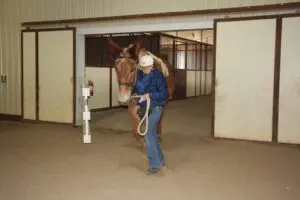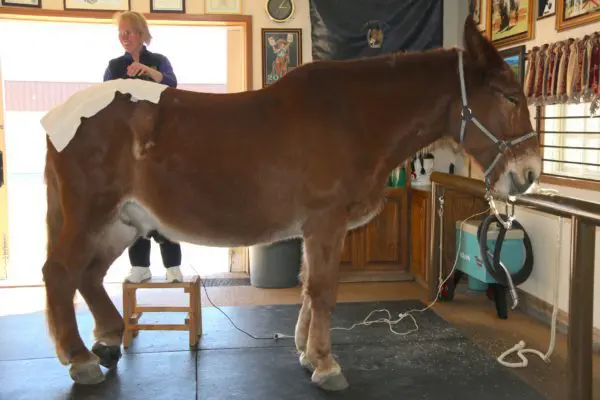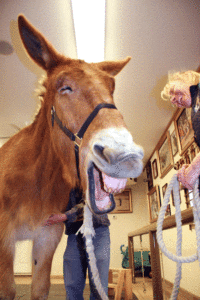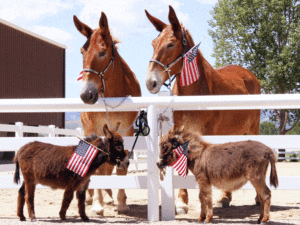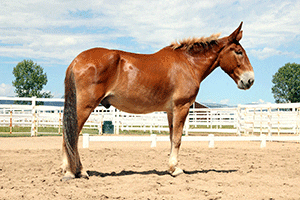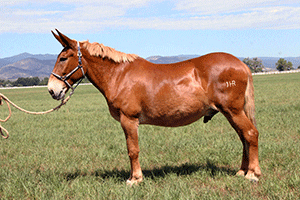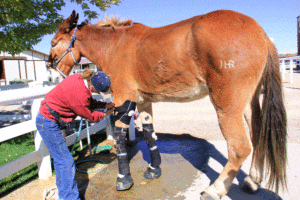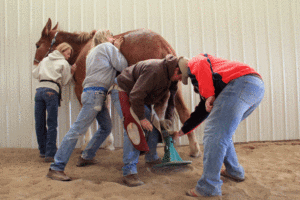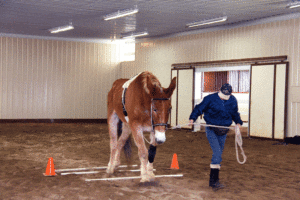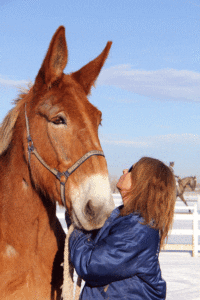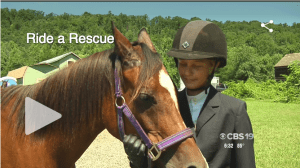Meet “COLT” and please help him if you can!
The following is from Chilly Pepper – Miracle Mustang:

Meet “COLT”, the newest orphan at Chilly Pepper. Colt was born in the wild and was severely injured by coyotes. After getting permission from the proper authorities he was brought in. That’s when life became even more “interesting”.
As usual, there is never a dull moment at CPMM. Matt and I had just gotten home from an event in Carson City with Lacy J Dalton to fund raise for the wild ones. We had taken Sapphire, Diesel and Stormy, the resident orphans, for a “meet and greet” at Lacy’s request. The even was amazing and so many folks got to “touch” a wild horse in the proper way. The babies did awesome and it was a great evening for all.
Matt and I spent the night with the babies in Gardnerville as we had to pick up Buddy, a sweet 4 year old mustang that we helped place in a new home up in Idaho. The next day we went home to meet the vet and brand inspector to get the 6 ready for their trip to Idaho.
[toggle_framed title=”Continue Reading” variation=”blue”]
Early Monday we loaded up Diesel and the other 5 and Matt set off to Northern Idaho. Once again the rescue truck needed repairs so my son took me and we dropped off that truck. About that time we got an emergency phone call. The horse Matt was supposed to pick up upon his return from BLM in Utah needed to be picked up ASAP. So as usual, God was giggling and Matt turned around, came home, unloaded all 6 and headed to Utah to do the pick up.
All went well and he returned with a gorgeous mustang. Once again we loaded up the 6 and he headed on out. While Matt was delivering in Idaho, and the rescue truck was sitting in the shop, we received notice about Colt. He was in extremely critical, life threatening condition and we had to get him asap. I was shocked and so proud when my son offered to pick him up in his little race car lol. He has a Golf GTI and he doesn’t even let anyone eat in it. He loves that car, but was putting it out there to pick up a stinky, injured orphan who was oozing puss to try and save it’s life.
It took nearly 7 hours to get to Reno, pick him up and get back home. We immediately started treating him and have been round the clock ever since. His injuries are severe and his whole right side is extremely swollen with edema from the trauma. He can barely walk and is unable to get up and down by himself except for a rare occasion or two. The vet is happy with the wounds and how they are draining, and is hopeful we will be able to pull him through.
Unfortunately last night he stopped drinking for the most part. So I am using a syringe and per the vet’s instructions making sure he gets alternating milk and water. We are trying to avoid having to do IV fluids. He is on pain meds and we are doing everything we can to keep him comfortable and give him time to heal and survive.
Folks were asking what supplies we need. _This is what we use on a daily basis for Colt. _
Paper towels
Gloves (type to keep sanitary lol)
Probios
Banamine Paste
Uniprim
Foal Lac Powder
Powdered goats milk
Foal Lac Pellets
Shavings
Soft grass hay
Betadine
Garbage bags
Please keep him in your prayers.
So we placed 6 horses, including Donkey, but already picked up another baby (“Colt”), and Matt is picking up 3 miniatures in need of help and bringing them home from California. It never stops and God keeps putting these beautiful souls in front of us.
We also got the dreaded “yakama call”. I was honestly hoping to not need to help so much with that this year, but there is only one place up there who can help so far and they can only do the babies. So it looks like there will once again be no rest, but I know God only gives us what we can handle. (That’s what I keep telling myself lol).
So we continue non-stop and want to say Thank You to everyone who is in this with us. It can be very overwhelming to everyone, but the best we can do is keep plugging along. I just try to get through one day at a time, celebrate the victories, mourn the losses and keep trying to “git ‘er done”. Y’all are amazing and we so appreciate you and all the love and support.
Picture below: Top left – injury to his back upper leg. Bottom left – severe swelling and injury to his leg.

If you want to help You can go to You Caring – to help us keep saving lives..
You can go to Paypal – Palominodancer@yahoo.com or go to www.chillypepper.org
if you would like to help these horses.
You can donate via check at Chilly Pepper – Miracle Mustang, P.O. Box 190 Golconda, NV 89414
You can also donate via credit card by calling Palomino at 530-339-1458.
NO MATTER HOW BIG OR HOW SMALL – WE SAVE THEM ALL!
SAVING GOD’S CRITTERS – FOUR FEET AT A TIME
Chilly Pepper – Miracle Mustang, LRTC PROJECT – Rescue & Rehab
LRTC (Least Resistance Training Concepts) is a 501c3 IRS EIN 68-0434118
[/toggle_framed]














.jpg)
 The following is from
The following is from 








 The following is from
The following is from 


















 The following is from
The following is from 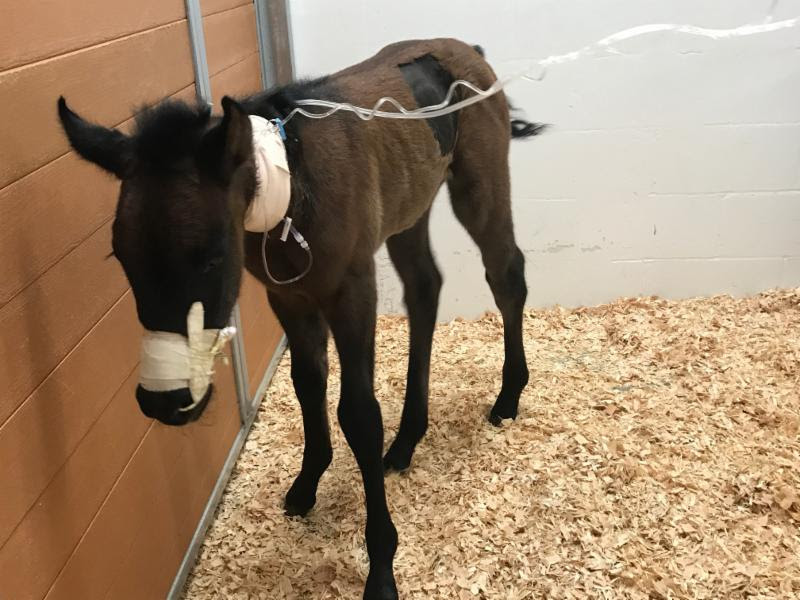
 Lots of attention and supportive measures were taken. A catheter was placed, blood drawn, and meds administered.
Lots of attention and supportive measures were taken. A catheter was placed, blood drawn, and meds administered.












